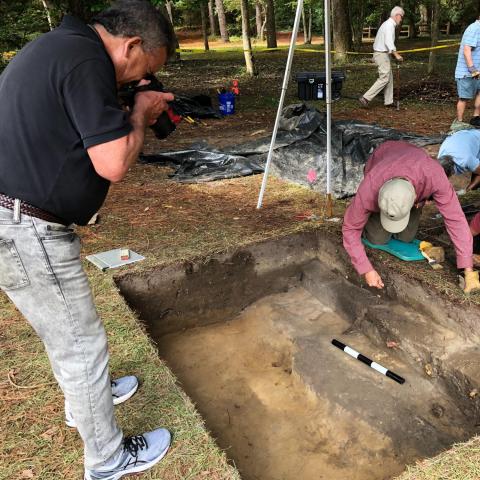Cape Hatteras National Seashore officials in North Carolina are working on the assumption that an after-hours off-road-vehicle driver ran over a threatened Green sea turtle that had come ashore to lay her eggs.
Superintendent David Hallac said Monday that most likely the driver ran over the turtle after 9 p.m. Saturday, the nightly cut-off time for ORVs on the seashore's beaches.
“This probably happened at night after hours. It was not legal to be driving," he said during a phone call. "A fair number of people use these beaches. It would be a little bit surprising if nobody else had seen this if it happened before 9 p.m.”
Seashore staff came upon the badly injured turtle Sunday about 7:30 a.m., the superintendent said. Its injuries were determined to be fatal, and so biologists euthanized the turtle. They were, however, able to recover 172 2-inch diameter eggs and bury them as the turtle would have done, and so there's a chance they will hatch.
“The last time this happened, they used standard protocol to rebury the eggs, and the nest hatched successfully," said Superintendent Hallac.
However, it's late in the season for nesting turtles, he said, which could compromise the success.
Sea turtles in North Carolina start nesting in May, and it can take their eggs about two months to hatch, depending on the temperature of the sand, according to the North Carolina Wildlife Resources Commission. The prospect of a robust hurricane season -- 12-17 named tropical storms, five-eight of which are expected to turn into hurricanes, are being predicted -- could also endanger the nest.

This Loggerhead sea turtle was killed in June 2010 by an off-road-vehicle at Cape Hatteras National Seashore. This past weekend a Green sea turtle was also run over by an ORV and had to be euthanized./NPS
Meanwhile, the National Park Service on Monday announced it was seeking public comment on plans to revise the ORV regulations for Cape Hatteras.
"The proposed changes include revising the times that certain beaches open to ORV use in the morning, extending the dates that certain seasonal ORV routes are open in the fall and spring, and modifying the size and location of vehicle-free areas," the agency said in a release. "The new proposal would also allow the Seashore to issue ORV permits with more varied time periods than currently exist and would change one ORV route designation to allow pedestrian use of an area on Pamlico Sound without the requirement for an ORV permit."
Public comments on the proposals are being taken through October 21. Details of the plans, and a place to comment, can be found on this page.
Superintendent Hallac could not say Monday whether this weekend's incident might affect the Park Service's position on the revisions to the ORV regulations.
"The incident is still under investigation, so we don't have enough information on the circumstances surrounding the incident to understand the cause. As such, it's unclear how current management or the proposed rule may affect the probability of these incidents occurring in the future," he said.
The last time a sea turtle was run over at Cape Hatteras National Seashore was in June 2010, when a loggerhead turtle was killed by an ORV. At the time, seashore officials said it was clear that the vehicle rode right over the turtle and then apparently became high-centered, as the driver backed up in an effort to free his rig.
Biologists were able to bury 92 of the turtle's eggs, but just six hatched. Officials never did apprehend anyone in that incident.
Some members of the Cape Hatteras community speculated in the 2010 incident, and in the most recent one, that Park Service vehicles were involved.


 Support Essential Coverage of Essential Places
Support Essential Coverage of Essential Places







Comments
Nowadays, the only way to stop after-hours or unauthorized anything is to actually have someone out there to spot them, stop them or at least get some sort identification for later reprisals. I can't imagine a new proposal or printed warning, etc. will stop someone from taking their ORV and going for a little moonlight drive if they feel like it.
There is also the very distinct possiblity that the act was deliberate. Perhaps as defiance against regulations, maybe fueled by some of those beverages that "remove No from the vocabulary."
I agree with both Lee and Rebecca. And since you won't get rid of the booze, put some commissioned LE rangers out there at night. Impound the expensive toys.
Control access